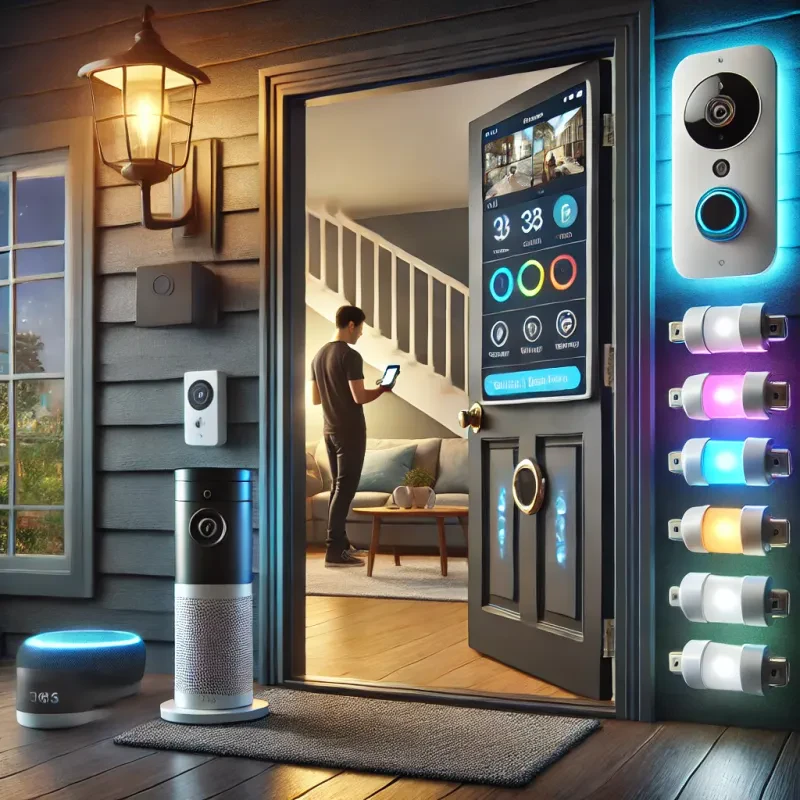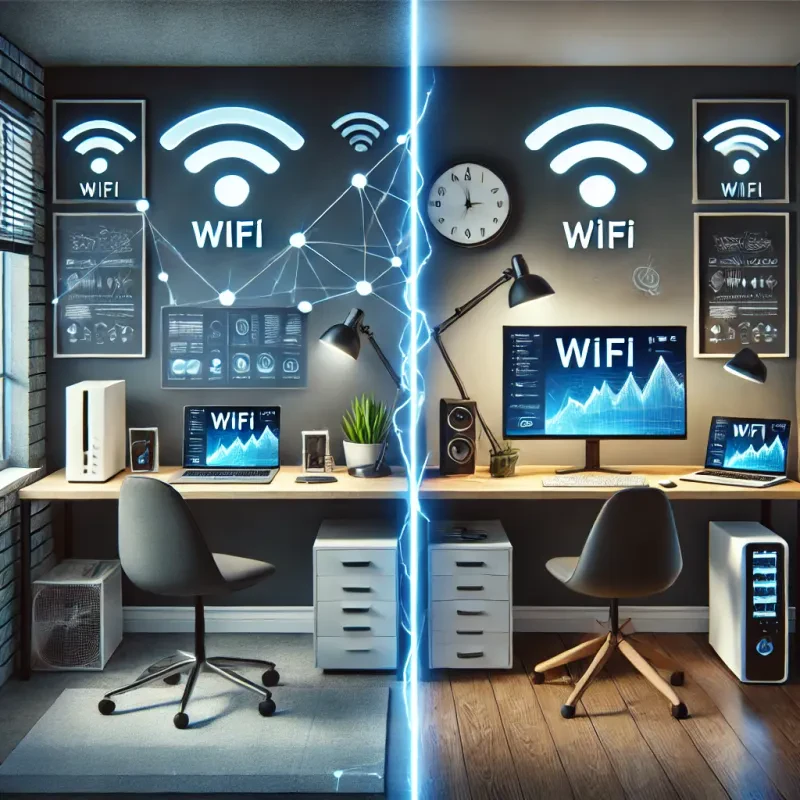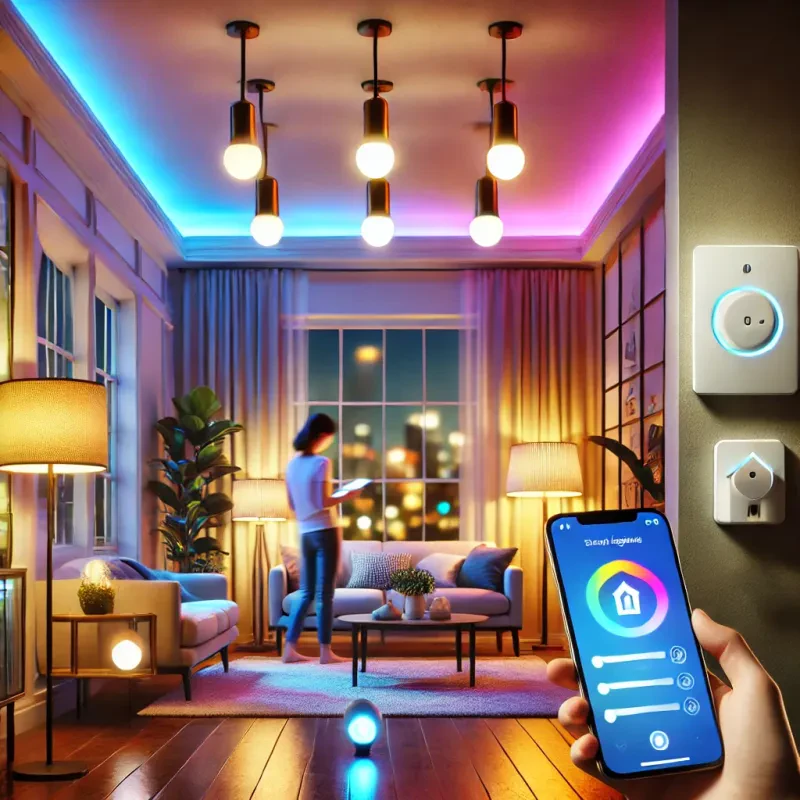Home automation is the process of using technology to control various devices and systems in your home. Imagine being able to adjust your thermostat, manage your lighting, and even monitor your security system—all from your smartphone. This convenience not only enhances your comfort but also contributes to energy efficiency and security, making your home smarter and more responsive to your needs.
At the heart of home automation are smart devices that can communicate with each other. These devices include smart speakers, security cameras, smart bulbs, and thermostats. Many of them connect to a central hub or app, allowing you to control everything from one place. For example, you can create routines where your lights turn on automatically when the sun sets, or your coffee maker starts brewing as soon as your alarm goes off.
One of the first steps in starting your home automation journey is to identify the areas in your home that could benefit from automation. Perhaps you want to improve energy efficiency by using smart thermostats, or increase security with smart locks and cameras. By determining your goals, you can prioritize which devices to invest in and begin enjoying the perks of a more connected home.
As you explore home automation, keep in mind the importance of compatibility among devices. Many manufacturers produce products that can work together seamlessly, so choose brands that offer a cohesive ecosystem. This way, you’ll ensure that your devices can communicate effectively, providing you with a smoother and more integrated home automation experience.
Choose the Right Smart Devices
Choosing the right smart devices is a crucial first step in your home automation journey. With so many options available, it can be overwhelming to determine which devices will best suit your needs. Start by considering what areas of your home you want to automate. Do you want to enhance your lighting, improve security, or create a smarter home entertainment system? Defining your goals will help narrow down your options.
Once you know what you want to achieve, focus on compatibility. Look for devices that can easily integrate with each other and with your existing technology. For instance, if you already use a particular voice assistant, like Amazon Alexa or Google Assistant, make sure your new devices are compatible with it. This ensures a seamless experience and allows you to control everything from one central hub.
Next, think about the ease of use. Some smart devices require complicated setups, while others are plug-and-play. Choose devices that offer a straightforward installation process and a user-friendly app. You want your home automation experience to enhance your life, not complicate it. Take the time to read reviews and user feedback to find devices that others have found easy to use.
Finally, consider your budget. Smart devices come in a wide range of prices, so it’s important to define your spending limits. Invest in a few key devices that offer the most value and expand your system over time as your needs evolve. Remember, home automation is a journey, and you don’t have to do it all at once!
Set Up Your First System
Getting started with home automation is easier than you might think! Begin by choosing a central hub that will allow you to control various smart devices throughout your home. Options like Amazon Echo, Google Nest Hub, or Apple HomePod can seamlessly connect with other devices. Each has its own set of features, so it's worth doing a little research to find which one best suits your needs.
Once you have your hub set up, start with one or two smart devices to keep things manageable. Popular choices include smart lights and smart plugs. Smart lights allow you to control brightness and color with just a voice command or a tap on your smartphone. Smart plugs let you turn everyday devices into smart ones, giving you remote control over appliances you already own.
Install the corresponding apps for your devices and follow the easy setup instructions. Most devices will require you to connect them to your home Wi-Fi network. Make sure your network is secure and has a strong signal in the areas where you'll be using your smart devices. Once everything is connected, spend some time exploring the functionality of your new gadgets and get familiar with the voice commands or app features you can utilize.
As you become comfortable with your first gadgets, consider adding more devices to enhance your automation setup. Smart thermostats, security cameras, and smart speakers can create a more integrated experience. The possibilities are endless, and with every addition, you'll find new ways to make your life easier and more convenient.
Enjoy the Benefits of Automation
Home automation comes with a variety of benefits that can enhance your daily life in numerous ways. One of the most appealing advantages is the convenience it offers. Imagine being able to control your lights, thermostat, and security system from your smartphone or tablet. Whether you're lounging on the couch or away from home, just a few taps can help you manage your environment effortlessly.
Additionally, automation can save you time. With smart home devices, you can set routines that align with your lifestyle. For example, you can program your coffee maker to start brewing before you wake up or schedule your lights to turn on and off at specific times. This not only simplifies your daily tasks but also lets you focus on what truly matters.
Energy efficiency is another significant benefit of home automation. Smart thermostats and lighting systems can adjust based on your habits, helping to reduce energy consumption and lower utility bills. By optimizing your home's energy use, you can contribute to a more sustainable future while keeping your budget in check.
Finally, automation adds an extra layer of security to your home. With smart cameras, motion detectors, and alarm systems, you can monitor your property in real-time and receive alerts if anything seems amiss. Knowing you have these systems in place can provide peace of mind and help you feel safe at home.


